Cold weather food for those long nights of winter, Classic Beef Stew & Dumplings is…
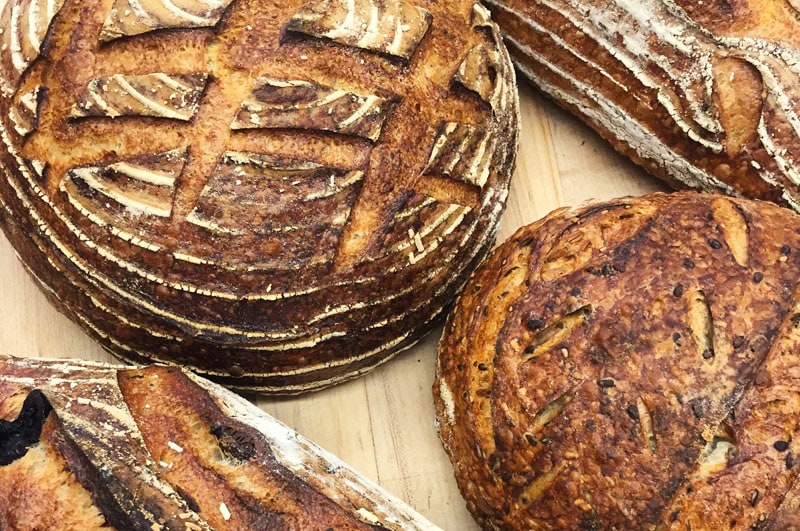
Crumb to Crust – Talking Bread & Community Conciousness with Jo-Ann Laverty
In the food industry in Ottawa for more than 30 years, Jo-Ann Laverty is a woman of the kitchen with true grit. From her beginnings with the Emerald Bakery to her most recent venture (with partner Jennifer Heagle) the Red Apron, Jo-Ann is both a smart entrepreneur and skilled cuisinier. After selling her interest in the Red Apron late last year, Jo-Ann has indulged in some much-needed downtime, and in doing so found new joy in the kitchen as she learned the subtleties of bread.
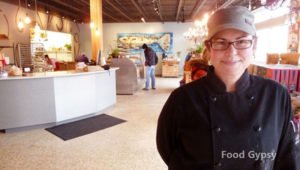
This summer she returned from her second bread course with King Arthur Flour in Vermont, where she baked some truly extraordinary bread! Thick crusted old-world style sourdough bread that cracks when you break it, the kind of bread that you can smell through your phone screen. Took the opportunity to sit down with Jo-Ann earlier to learn more about her bread baking education in hopes that she might share some fresh inspiration with us… and I was not disappointed.
 Bread & Rest
Bread & Rest
FG: Recreating your life is a very individual process. What works for you? Being a small business owner can be exhausting, particularly in this business. So how are you going about the process of recreating after your transition out of the Red Apron? How do you uncover the next passion when you’re all wrung-out?
JL: I made the decision to take a long break. I’ve had the time to travel and explore some things that have been on the back burner for a while. Ideas I’ve had, courses I’ve wanted to take, people to connect with, time with family, and time for myself.
I had to learn how to cook for four people again, I’m used to prepping for 200. (laughs) Meals were way out of whack for a while and my partner would look at all the food in the fridge and say ‘why do we have SO MUCH FOOD?!’ So I had to learn to cook small again and connect to the process, with that came a desire to stretch.
FG: Bread is a wonderful way to stretch, but what was it about old-world sourdough that piqued your interest?
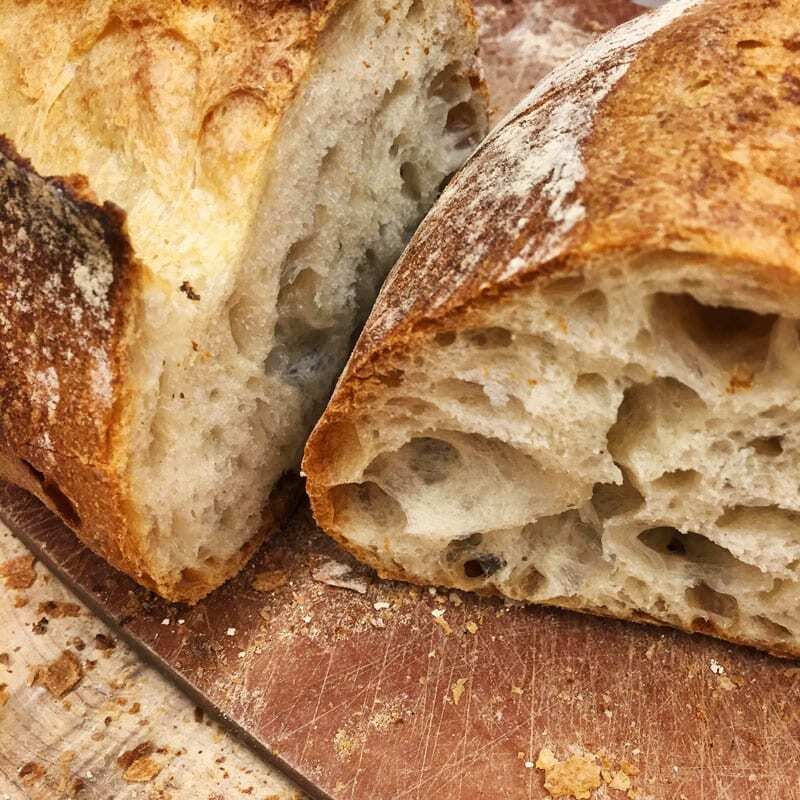
JL: I’ve always had an interest in bread, in the science of bread but I was never really confident enough to bake bread. It’s an intimidating process. Looking for a place [to learn and explore the topic] King Arthur Flour’s courses came up as my top pick. They offer five-day intensives geared to the professional. The program is robust, the pace is fast and the instruction is excellent.
FG: Would you recommend the course at King Arthur Flour for the layman/home cook?
JL: King Arthur offers several class levels at their Vermont Baking Centre – home baker courses, courses for kids, and professional courses. Jumping headfirst into the Advanced Bread Making Class without the primer of The Fundamentals of Bread Making (which I took late last year) would be impossible unless you have a serious background in bread.
King Arthur Flour teaches a European approach to bread. Located in Norwich, Vermont it’s an easy five-hour drive from Ottawa through New Hampshire and New England, so it’s gorgeous! The mill was founded in 1790, it’s is 100% employee-owned and the largest employer in town and they are producing flour mixes that are hard to find in North America.
Most of us in North America know only two types of flour: Pastry Flour and All-Purpose Flour, and that’s it.
FG: It’s true, flour is a MUCH more complex subject in Europe. There are different percentages of ash, choices of grains, grinds, blends, and mixes depending on what you’re making. Even different blends of pastry flour. We’re flour deprived here, largely because of the type of bread we’ve been fed since the end of World War II – white, sliced bread.
JL: Large-scale commercial bread has become the norm for convenience and profit. But in the search for soft, sweet white bread much of the craft of bread making has been lost.
FG: Even old-world breads like baguettes have taken on that North American look; pale and golden instead of the rich flavour, deep, crispy crust, and firm inner texture of what bread once had. We’ve called this ‘progress, but now we are starting to see the pendulum swing back as the Old World approach to bread appeals to the artisans among us.
JL: We’ve been seeing that shift in Ottawa since local Farmer’s Markets began to feature a different kind of product. That movement that began as a pleasant way to spend your Saturday morning and now it’s fueling food trends and culture. Big box stores have been destroying food culture, commerce, and jobs with mass production and now we are starting to see a very real shift away from that.
We’ve been conditioned to want variety, and all things at all times but that’s just not sustainable. I think a lot of people are looking at what they eat now and asking themselves if they should be buying/eating/cooking differently. They’re seeing the impact of the choices they make on a large scale and making conscious decisions.
In an old world model food sustains a community. It’s time we got back to what works.” – Jo-Ann Laverty
FG: Thus, bread.
JL: Yes, bread!
FG: Staff of life…
JL: … a long history of sustaining peoples, communities, and culture.
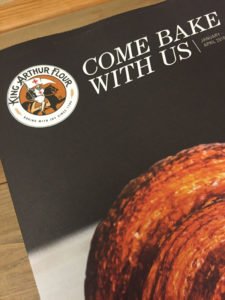
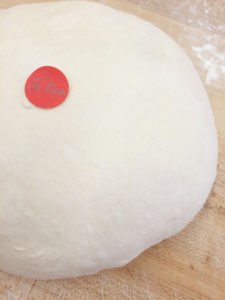
The Proofing
FG: The art of boulangerie is a very different journey from cuisine. Tell me more about the course, what was the participant mix? Mostly pros?
JL: The student mix was largely industry-related; cooks, artisans and some academics. The class size is capped at 12 people maximum, and the courses are run quarterly. They usually have a waiting list, because it’s a very well-rated course. Classes are 8-hour days and the instruction level is excellent. The small group makes for an intimate setting and solid one-on-one instruction.
You’re right though, bread is a very different pace from cuisine. Cuisine is fast and diverse, once you know technique you find all kinds of time-saving short-cuts and volume becomes easy.
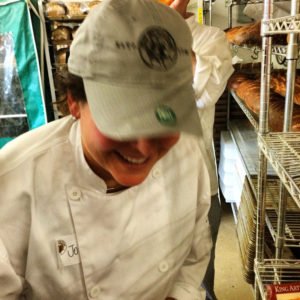
“Bread is a long, slow conversation. It takes a minimum of 18 hours to make a loaf of bread. With bread there are no short-cuts, it takes time and commitment. But once you know bread, you’ll find it very flexible.” – Jo-Ann Laverty
FG: The cost for the five-day professional course is $1,100 USD (plus travel, accommodation, and meals). Did you find the value was worth the investment?
JL: Absolutely. Our course instructor Jeffrey Hamelman is a Master Baker, his articulation of the process and his guidance was amazing. He doesn’t teach a recipe, he teaches you how to listen to the bread to understand what it is saying at each stage. When to feed it, when to knead it, when to rest it. All of those decisions make a difference in your bread, its proteins, structure, fermentation and flavour.
The attention to detail and thoroughness of each explanation helped me to understand boulangerie on a MUCH deeper level. Worth every penny, for sure.
I think the reason workshops [like this one] are so popular is because bread is an intimidating process. It’s easy to rush bread or misread it. People need more of a handhold through it with someone who can say (with authority), why the dough is behaving in a certain way and how to deal with that.
Bread is such a changeable thing, it reacts to weather, temperature, humidity…
FG: Because it’s alive…
JL: It IS alive until you bake it. That’s the beauty of it!
FG: After making all the fancy breads, Italian, French, Brioche, Sourdough, yeasted basics; what’s your favorite bread now?
JL: Regular White Sourdough – the most basic of bread, it’s just flour, salt, water, and culture. Or a 100% Rye Bread, done right it’s dense, like a cake. I love that too. (Laughs) I love bread A LOT.
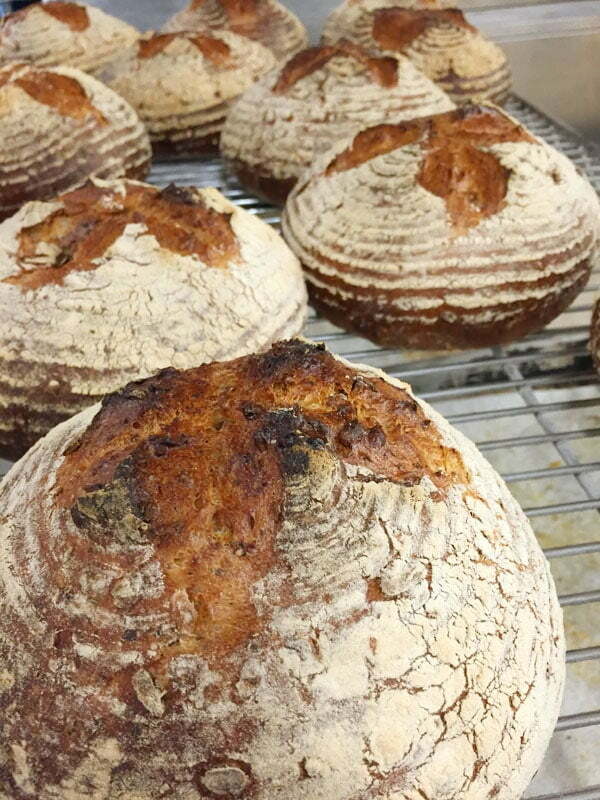
Basic Bread
FG: For those interested in making beautiful bread is there a recipe you would start with?
JL: I would recommend Jim Lahey’s No-Knead Bread Recipe to start. (insert: ) It’s an easy, well-tested recipe and it will help you build confidence. The No-Knead Dutch Oven Bread is also a great beginner bread to get the feel for the texture and smell of a good dough. In bread baking, you use all your senses!
FG: You also took a course with one of my favorite bakers on Instagram, Tara Jensen (@bakerhands) in the Bon Appetit Kitchen in New York City, did that complement this experience?
JL: I took the short course with Tara Jensen in between the two courses [at King Arthur], and that brought a whole new aspect to the mix. Tara has a deep collaboration with her North Carolina supplier (Carolina Ground), if they have a bad grain year she adapts her product and her business instead of dumping her supplier. It’s a deep commitment to the community and that builds lives and livelihoods.
“In so many ways these experiences brought me back to why I got into food in the first place, connection. Bringing people back to quality and value. It is so easy to live in a disposable world, but is that really what you want out of life?!
Keeping connected to each other we build a cycle of support and commerce, rather than a straight trajectory of profit leaving our community, and often our country, just to buy more stuff we often don’t even need. It was pure inspiration.” – Jo-Ann Laverty
The Last Crumb
FG: On that note, it sounds to me like someone’s ready to get back to work! What’s next for the talented Jo-Ann Laverty? Will you be baking bread?
JL: GOD NO! (laughs) For one thing I hate the hours! (laughs some more…) But I will be launching something later this fall, online. It will be something… on the sweet side of the kitchen and I’m pretty excited about it.
So are we! We’re sure that with Jo-Ann at the helm whatever’s in the works will be extraordinary.
Nothing like ending on a sweet note. We hope this conversation shared both industry insight and encouragement It’s good to know that there are more food fanatics just like you out there. (We are a small, but mighty presence!) Go forth now, indulge in bread making and culinary adventure – and never stop learning. Fuel your brain and your belly and follow along as Jo-Ann Laverty (Instagram: @foodfirefeast) continues to recreate. Until next time Foodie Gypsies…
Peace, love & sourdough.
~ Cori
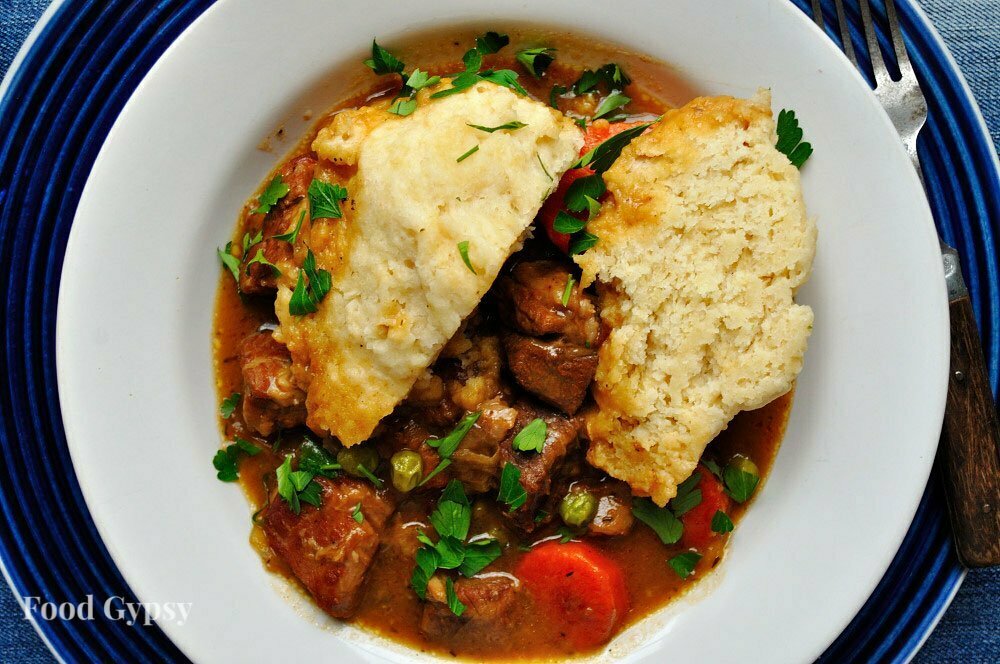
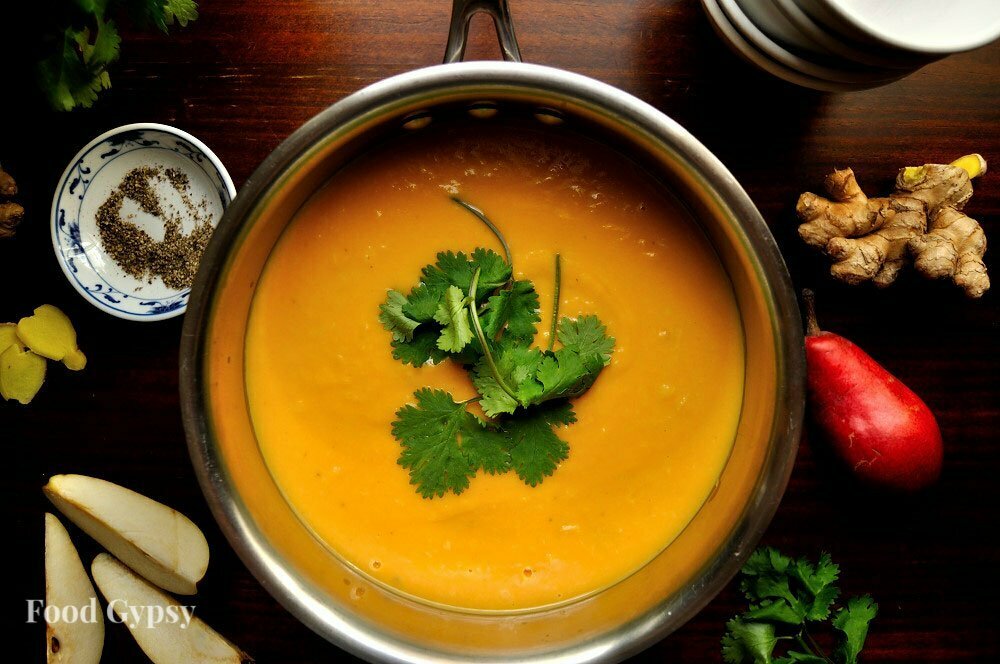
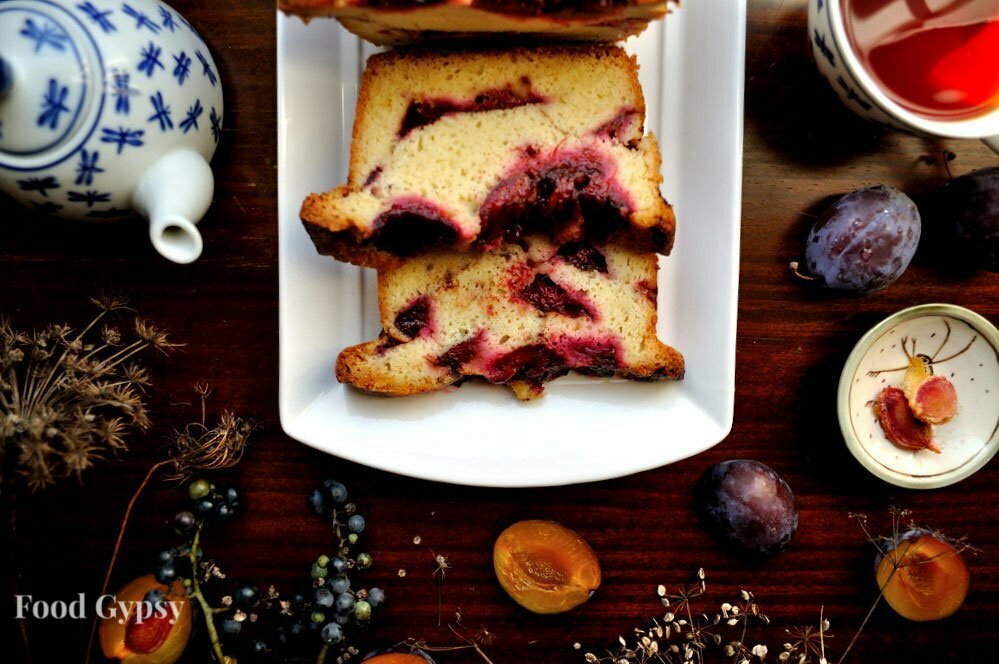
Post: A great conversation. Renewal, learning & industry insight with Jo-Ann Laverty @foodfirefeast #ottfood https://t.co/0ylIAP1E9q
Crumb to Crust – Talking Bread & Community Conciousness with Jo-Ann Laverty: In the food industry in Ottawa f… https://t.co/htFDqi6nts
On the blog today, Crumb to Crust with Jo-Ann Laverty. A discussion on learning to speak the language of bread. https://t.co/0ylIAP1E9q
RT @thefoodgypsy: On the blog today, Crumb to Crust with Jo-Ann Laverty. A discussion on learning to speak the language of bread. https://t…
RT @thefoodgypsy: On the blog today, Crumb to Crust with Jo-Ann Laverty. A discussion on learning to speak the language of bread. https://t…
RT @thefoodgypsy: On the blog today, Crumb to Crust with Jo-Ann Laverty. A discussion on learning to speak the language of bread. https://t…